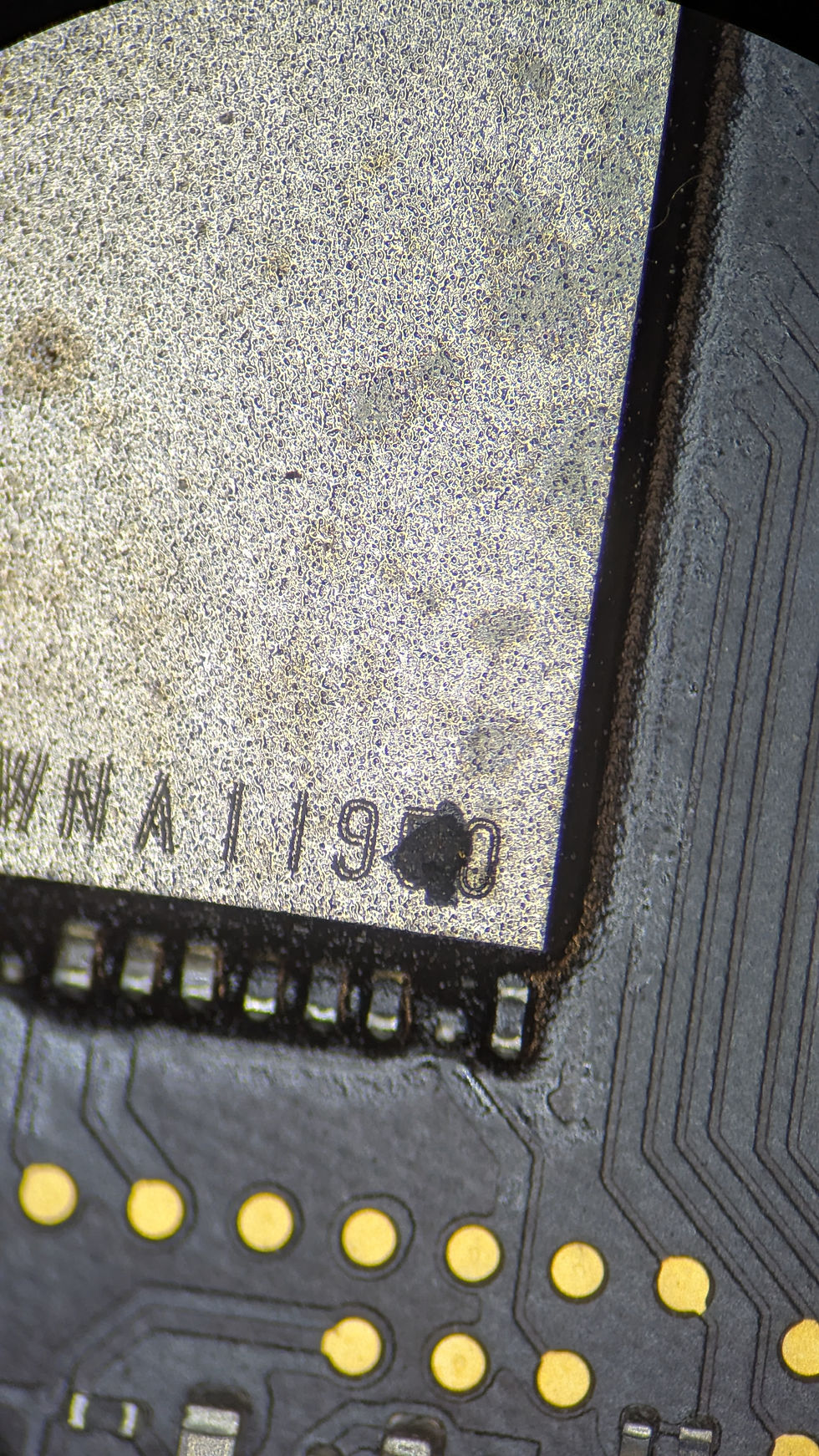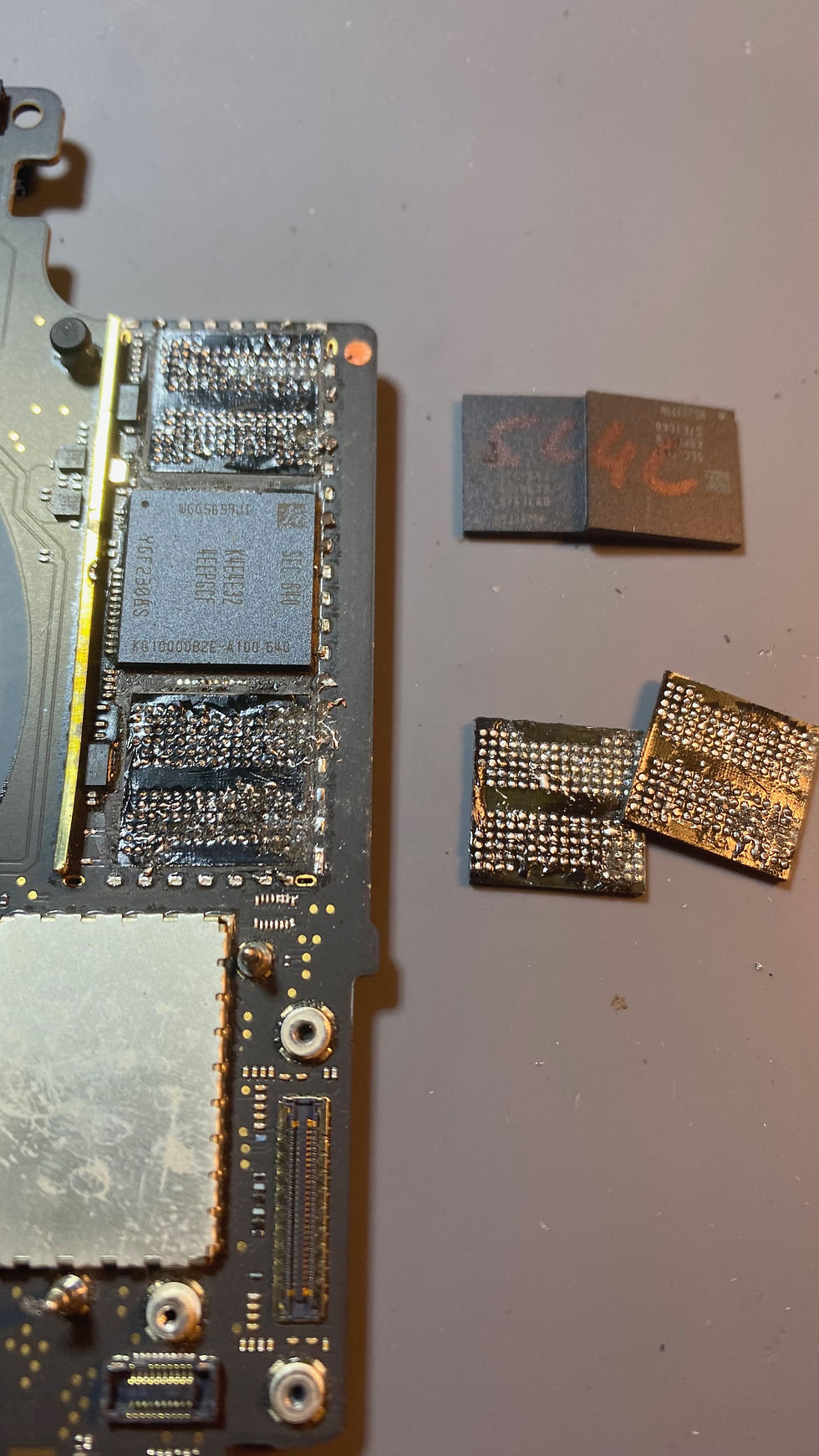As a Mac user, I know how frustrating it is to face data loss with your MacBook. Solid State Drives (SSDs) offer great speed and reliability, but they come with unique challenges, especially when their NAND chips are soldered onto the motherboard. In this post, I will explore the common issues with SSDs on Macs, explain the data recovery process for important data, and provide actionable insights for when your device is damaged.
The Advantages and Disadvantages of SSD Drives in MacBooks
Apple's introduction of SSDs dramatically changed the performance landscape for MacBooks. Applications launch faster, file transfers are nearly instantaneous, and overall responsiveness soars. According to a study, users can experience up to a 500% improvement in speed compared to traditional hard drives.
However, SSDs come with notable downsides, particularly regarding data recovery. SSDs use NAND flash memory, which writes data in a fundamentally different manner than spinning hard drives. While SSDs are generally more resilient, they can fail for several reasons, such as:
Physical Damage: Impact from drops or severe bumps can disrupt operations.
Firmware Issues: Software corruption can render SSDs unusable.
Power Interruptions: Unexpected power failures can lead to data loss.
Interestingly, although SSDs lack moving parts, the sudden loss of data can be more severe since traditional recovery methods (like those used for rotating hard drives) are often ineffective.
Adding to these challenges is the trend toward soldering NAND chips directly onto the motherboard. This design choice enhances the MacBook's slim, sleek profile but complicates repairs and data recovery, often requiring specialized skills and tools.
The Challenge of Soldered NAND Chips
The soldered nature of NAND chips in Macs poses significant challenges when something goes wrong. MacBooks boast high-quality construction, but if your device sustains damage from drops or water exposure, retrieving data becomes more complicated.
When traditional storage devices are damaged, recovery processes can be straightforward. However, with soldered NAND, you often need expert help. The extraction of data from a damaged SSD is complex and can be costly, sometimes ranging from $300 to over $1,500, depending on the extent of the damage and the recovery methods used.

Why NAND Swaps Are Problematic on T2-Based MacBooks
One of the biggest challenges in recovering data from newer MacBooks—especially those with the Apple T2 security chip—is the way Apple has integrated encryption directly into the hardware. The T2 chip acts as a secure enclave, tightly binding the SSD’s NAND storage to the logic board it came with. This means that even if you successfully remove the NAND chips and transplant them to another board, the data remains encrypted and unreadable without the original T2 chip that generated the encryption keys.
In other words, the T2 chip doesn't just help with system security—it actively blocks traditional data recovery methods. Each NAND chip is crypto-graphically paired with its own T2 chip, and without that exact pairing, access to the data is impossible. This makes a straightforward NAND swap ineffective unless you also transfer the T2 chip, which is both risky and nearly impossible due to how it's bonded to the board.
Why It’s Expensive and High-Risk Work
From a technical standpoint, doing a NAND swap on a T2 Mac is a precision job. These chips are small, sensitive to heat, and sit close to other delicate components. Any misstep during removal or reballing can permanently damage the NAND or surrounding circuitry. Additionally, even if the swap is physically successful, you're still stuck with encrypted data unless the original T2 chip is intact and functional.
That’s why successful data recovery in these cases often requires not a swap, but repairing the original logic board just enough to get it to power on—even temporarily—so the data can be extracted. This is where micro-soldering skills, access to board schematics, and a deep understanding of Mac logic boards come into play. It’s a complex, high-skill, high-stakes operation—and it’s what separates specialized repair shops from basic service providers.

Why NAND Swaps on M-Series Macs Are Incredibly Difficult and Not a Realistic Solution
When it comes to Apple’s M1, M2, and M3 Macs, data recovery takes a whole new level of complexity. These machines feature a highly integrated design where the NAND chips, Apple Silicon CPU (SoC), RAM, and SPI/BIOS firmware are all tightly bound together at both a hardware and security level. The NAND is encrypted using keys that are generated and stored inside the original SoC's Secure Enclave. This means the NAND chips cannot be read or decrypted unless they remain paired with their original Apple Silicon chip.
So what about moving everything—NAND, CPU, and BIOS—to a donor board? In theory, if you could perfectly transplant all of those components, you might be able to boot the system. But in practice, it’s nearly impossible. The CPU and RAM are packaged together as a single BGA chip, and desoldering and reballing that package is one of the most technically challenging procedures in microelectronics. It requires specialized rework stations, extreme precision, and even then the chances of a successful transplant are very low.
Unlike older Macs, you can’t simply swap the NAND to another board and expect to access the data. And while PMICs (power management ICs) are important for powering the board, they don’t need to be transferred—they’re not involved in encryption or security.
Why Repairing the Original M-Series Mac Motherboard Is the Only Practical Path
Because of this level of hardware-level encryption and component integration, the only viable way to recover data from an M1/M2/M3 Mac is to repair the original logic board. Even if the board has suffered liquid damage, a shorted power rail, or dead components, the goal is to get the original board to boot just enough to allow data access.
That’s where professional logic board repair makes the difference. Instead of wasting time or money on risky chip swaps, a skilled technician can troubleshoot the board under a microscope, identify and fix power delivery issues, replace corroded or shorted components, and bring the machine back to life temporarily—just long enough to extract important files.
For customers, this means the most reliable and cost-effective solution is always to attempt board repair first, especially when the data is irreplaceable.
Identifying SSD Failure Symptoms in Macs
Early detection of SSD failure can save you from substantial data loss. Watch for these common signs:
Slow Performance: If your Mac suddenly lags during tasks you used to complete quickly, it could be an early warning sign.
Frequent Crashes and Freezes: Regular crashes, especially during startup, often indicate SSD-related problems.
Corrupted Files: Missing or corrupted files may suggest your SSD is nearing failure.
Error Messages: Disk-related error messages can point to underlying SSD issues.
If you experience these signs, take immediate action by backing up your data to minimize the risk of permanent loss.

What to Do When Your Mac SSD is Damaged
If your MacBook is damaged, follow these steps:
1. Assess the Damage
First, determine the extent of the damage. If you suspect macbook vannskade (water damage), turn off your device immediately. Water can create short circuits that might cause irreversible data loss.
For macbook fuktsakde (moisture damage), dry out the device completely before attempting to power it back on. It may be wise to let it air dry for at least 48 hours.
2. Try Basic Troubleshooting
Sometimes, simple troubleshooting can resolve issues. If your Mac won't boot, consider resetting the NVRAM/PRAM and the SMC (System Management Controller). However, if physical damage is involved, these steps may not be successful.
3. Explore Data Recovery Options
If your data is crucial, professional data recovery services are often your best bet. Experts can recover data from damaged SSDs, even when NAND chips are soldered to the motherboard. Here are a few avenues to consider:
Professional Data Recovery Services: Seek a service specializing in SSDs and check their reviews to ensure they can handle MacBook repairs. This option may be expensive, but it offers the best chance to recover valuable data.
DIY Recovery Software: If the loss isn't due to physical damage, you might try recovery software. Use caution, as unsuccessful attempts could worsen data loss.
Apple Support: If your MacBook is under warranty or you have AppleCare, contacting Apple Support can provide options for repair and data recovery assistance.
Preventing Data Loss in the Future
Understanding the risks associated with soldered NAND chips and SSDs can help you protect your data. Here are some strategies:
Regular Backups
Creating regular backups is one of the best ways to safeguard your data. Use Time Machine or reliable third-party applications to back up your files frequently. This practice ensures you have access to your important documents even if disaster strikes.
Avoid Liquid Exposure
Liquid damage is a leading cause of SSD failure. Be cautious around liquids and refrain from using your MacBook in high-risk situations. Consider investing in protective cases or keyboard covers for additional security.
Monitor Hardware Health
Numerous applications can help track your SSD's health. By regularly checking your device's performance, you'll be alerted to potential issues early on, allowing for timely intervention.
Storage Management
Maintaining optimal storage levels is crucial. Aim to keep at least 15% of the total capacity free. Overfilling your SSD can lead to slower performance and possible failure.

When to Seek Professional Help
Deciding when to seek professional help can be tricky. If you've attempted basic troubleshooting without success, it may be time to consult an expert.
If your MacBook exhibits clear signs of macbook væskeskade (liquid damage), reach out to local repair shops or data recovery specialists for an evaluation. Their expertise can help guide you toward the best course of action.
Final Thoughts
While SSDs have significantly boosted performance in MacBooks, their challenges—especially when dealing with soldered NAND chips—can create serious difficulties in data recovery. Understanding these risks, recognizing the signs of failure, and knowing the available recovery options is essential.
Taking preventative measures like regular backups and cautious device usage can help protect your data from loss. For more severe issues, don’t hesitate to seek professional assistance. Quick action can make all the difference in successful data recovery.
With the right knowledge and strategies, you can navigate the world of Mac SSD drives with confidence, preserving your valuable data and ensuring a smooth digital life.

Need Help with a Damaged MacBook SSD?
At Macrepair.no in Oslo, we specialize in advanced Mac logic board repair and secure data recovery—even from liquid-damaged or dead MacBooks with T2 or Apple Silicon chips. Contact us today for a free evaluation and protect your irreplaceable data.
Google maps and reviews








Commenti